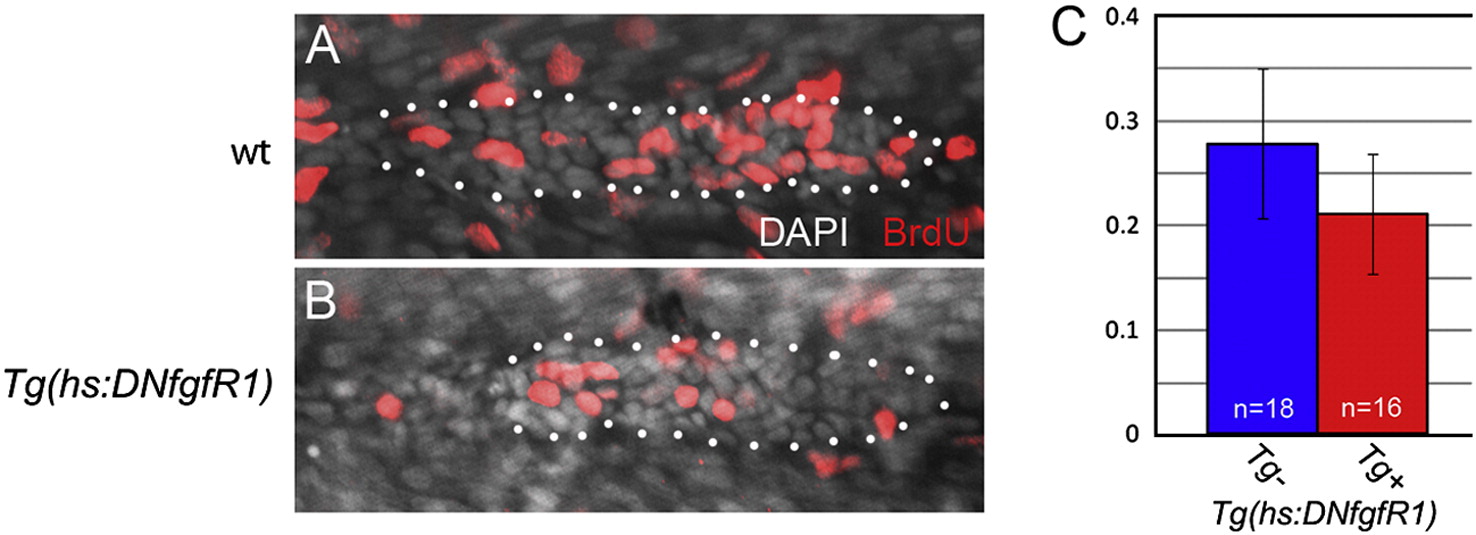Fig. S2 Reducing Fgf signaling in heatshocked Tg(hs:DNfgfR1) primordia leads to a reduced BrdU index. BrdU labeling (red) in heatshocked, non-transgenic sibs (A) and heatshocked Tg(hs:DNfgfR1) primordia (B), counterstained with DAPI (grey). Embryos were heatshocked at 26 hpf, six hours prior to receiving a one hour BrdU pulse at 32 hpf and immediately fixed. (C) Reducing Fgf signaling by heatshocking Tg(hs:DNfgfR1) embryos leads to a significant reduction in BrdU incorporation (BrdU index for heatshocked, non-transgenic sibs = 0.28 ± 0.10, n = 18; BrdU index for heatshocked tg(hs:DNfgfR1) = 0.21 ± 0.10; n = 16; Student′s t-test p = 0.005).
Reprinted from Developmental Biology, 349(2), Aman, A., Nguyen, M., and Piotrowski, T., Wnt/β-catenin dependent cell proliferation underlies segmented lateral line morphogenesis, 470-482, Copyright (2011) with permission from Elsevier. Full text @ Dev. Biol.

